Did you know that plants lose most of their water through their leaves? Some of you may remember this fact from their high school biology class. And if you somehow were able to remember anything from your high school biology class – I applaud you 😉 As for me, I did not remember this fact until I had to take more biology courses in college.
Alright, now back to my next question… Have you ever wondered how trees survive hot, dry conditions while still looking green and beautiful? Well, there are many trees like this growing naturally out in the desert and inside of your own garden.
Now, I will not go into a lecture about transpiration (loss of water from parts of the plant, especially leaves). But I will show you how some of my favorite trees survive the intense sun without losing all of their water.
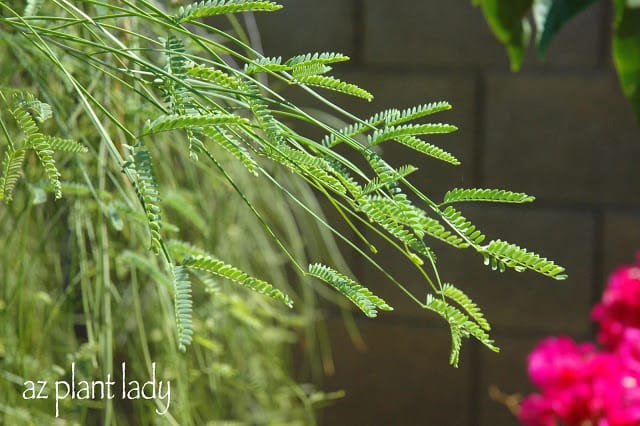
Palo Blanco (Acacia willardiana)
Take a look at the leaves of one of my favorite Acacia species. They are tiny, aren’t they?

Sweet Acacia (Acacia farnesiana)
The leaves of the Sweet Acacia are even tinier.
Some trees vary in the shape of small leaves that they produce. Some leaves are more round in their shape.
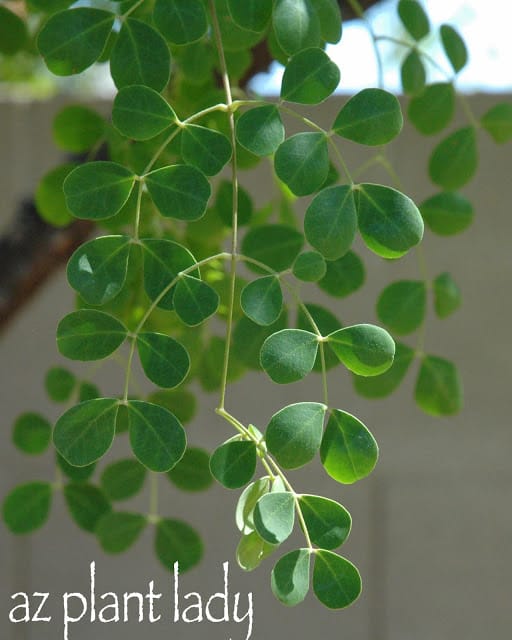
Cascalote (Caesalpinia cacalaco)
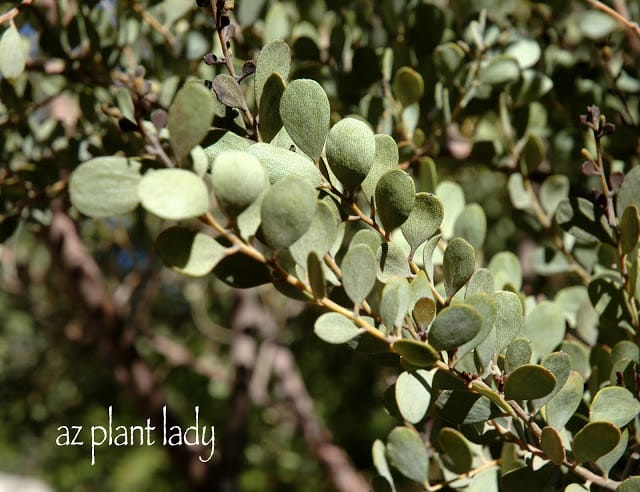
Leatherleaf Acacia (Acacia craspedocarpa)
Others are long and narrow.
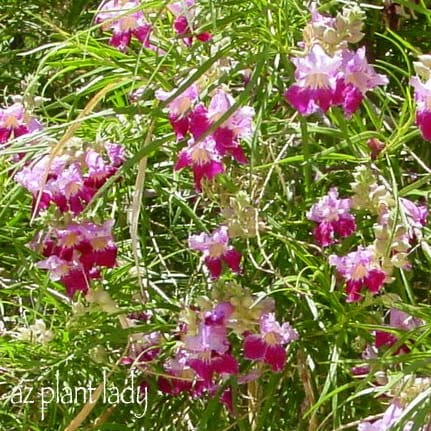
Desert Willow (Chilopsis linearis)

Weeping Wattle (Acacia saligna)
What all of these leaves have in common is that they limit the amount of water that is lost to the air.
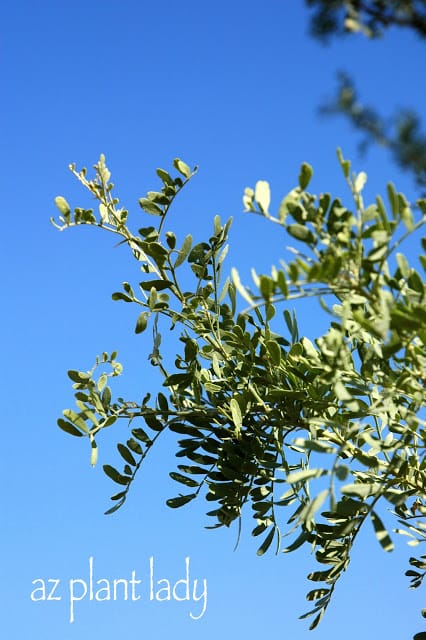
Ironwood (Olneya tesota)
How do they do this, you may ask? Well it turns out that the smaller the leaf, the less surface area that is exposed to the sun and air. And so as a result, there is less water lost to the atmosphere.
One way that the leaves help to hold on to their water is by having a tough cuticle (outer coating) that also cuts down on water loss. Another way is that many desert trees and plants are light green or gray in color. This helps the leaves to reflect more sunlight and heat.
Of course, trees with large leaves are grown quite successfully here in the desert and you will find many of them growing in the landscape.
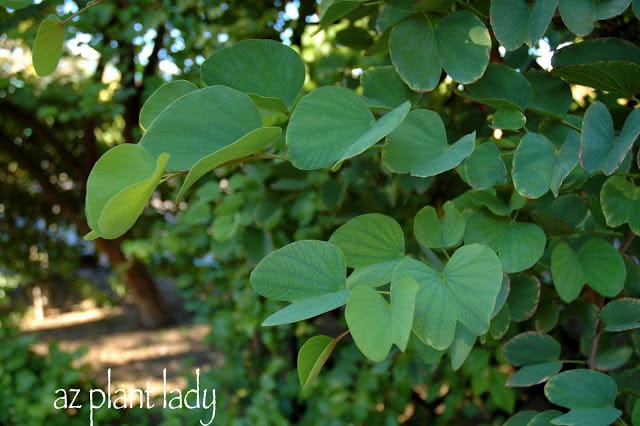
Orchid Tree (Bauhinia variegata)
Since we live in a semi-tropical environment, many trees from tropical areas thrive in our climate. They are largely characterized by large leaves.
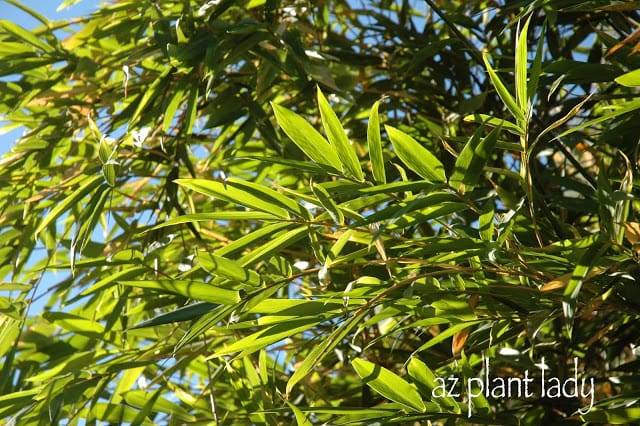
Bamboo
Some trees with large leaves require high amounts of water to grow since they lose so much water through their leaves. Now, I am not saying that you should not use trees that have larger leaves, but if you do decide to include them in your landscape, I would limit them to only a few and then plant more drought-tolerant trees as well.
Some of my other favorite drought tolerant trees that are not pictured are the Palo Verde, Texas Ebony, Eucalpytus and Mesquite.
Below, is one of my favorite desert trees, the Lysiloma, which is a perfect example of a tree adapted to our desert climate and is extremely drought tolerant – just look at the tiny leaves. They look somewhat like the fronds of a fern from far away.
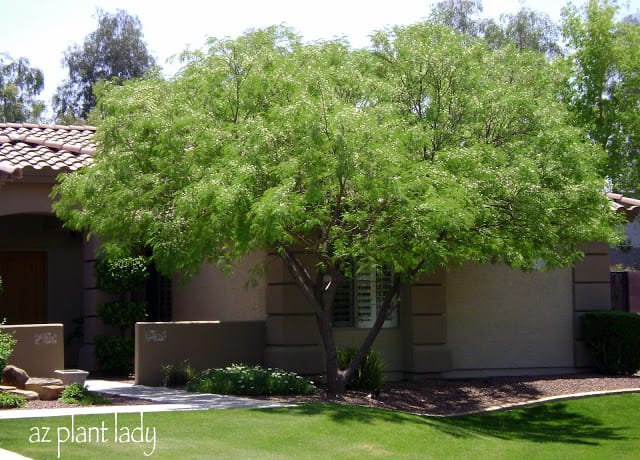
Lysiloma
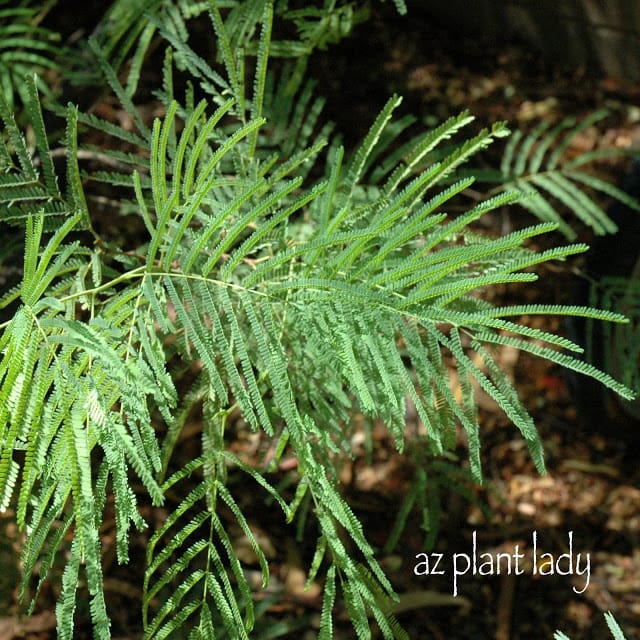
Lysiloma leaves
Some examples of trees that are known to be high water users are Cottonwood, Ash, Weeping Willow and Chinese Pistache trees.
For those of you who want to do all you can about conserving water in the landscape, I would recommend that you select trees that have smaller leaves and/or are known to be drought tolerant. You can find more trees listed and find out whether or not they are high or low water users at this helpful link.
I hope some of you find this information helpful.
Have a great day!








